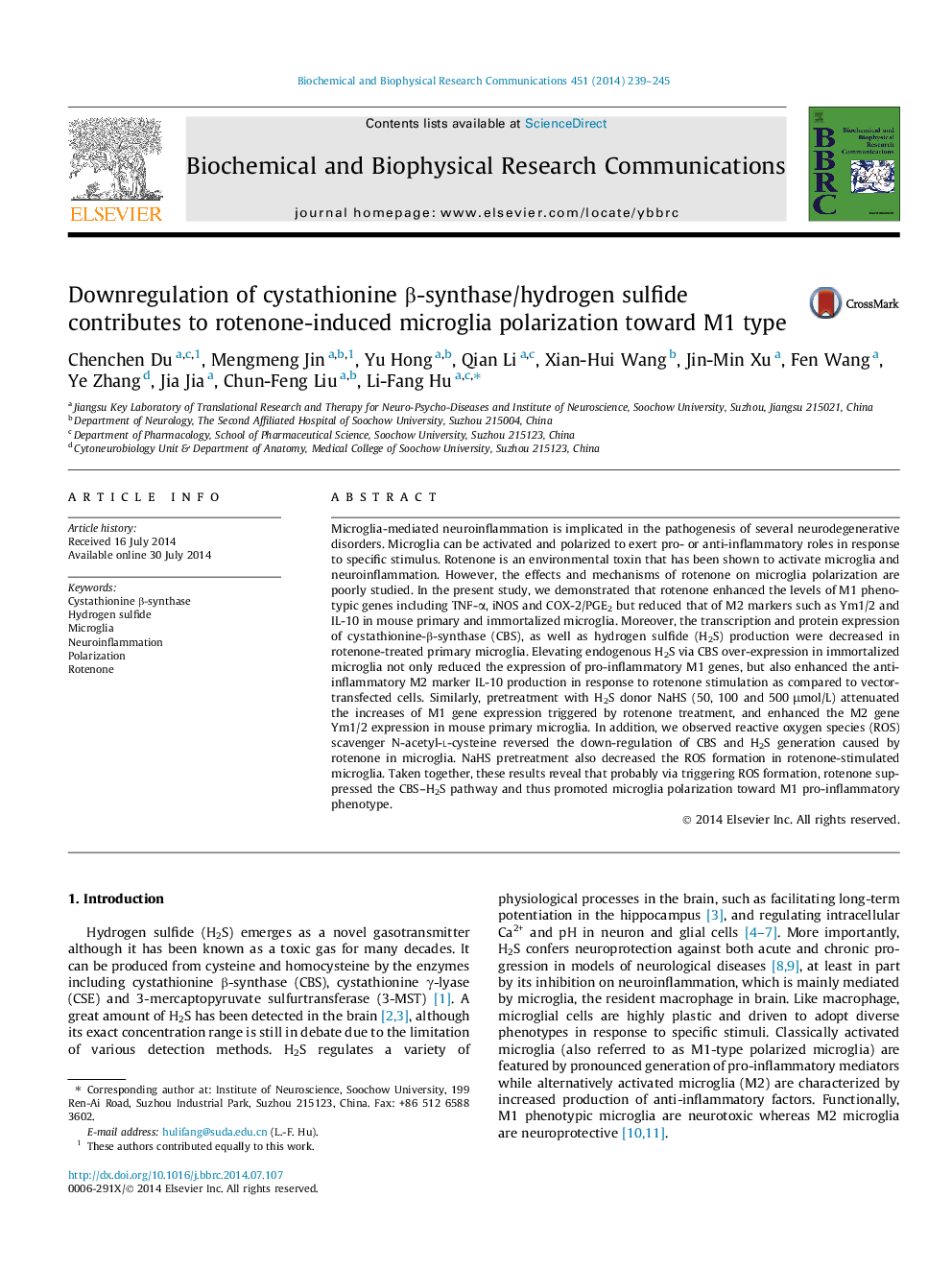| کد مقاله | کد نشریه | سال انتشار | مقاله انگلیسی | نسخه تمام متن |
|---|---|---|---|---|
| 10754099 | 1050351 | 2014 | 7 صفحه PDF | دانلود رایگان |
عنوان انگلیسی مقاله ISI
Downregulation of cystathionine β-synthase/hydrogen sulfide contributes to rotenone-induced microglia polarization toward M1 type
دانلود مقاله + سفارش ترجمه
دانلود مقاله ISI انگلیسی
رایگان برای ایرانیان
کلمات کلیدی
موضوعات مرتبط
علوم زیستی و بیوفناوری
بیوشیمی، ژنتیک و زیست شناسی مولکولی
زیست شیمی
پیش نمایش صفحه اول مقاله

چکیده انگلیسی
Microglia-mediated neuroinflammation is implicated in the pathogenesis of several neurodegenerative disorders. Microglia can be activated and polarized to exert pro- or anti-inflammatory roles in response to specific stimulus. Rotenone is an environmental toxin that has been shown to activate microglia and neuroinflammation. However, the effects and mechanisms of rotenone on microglia polarization are poorly studied. In the present study, we demonstrated that rotenone enhanced the levels of M1 phenotypic genes including TNF-α, iNOS and COX-2/PGE2 but reduced that of M2 markers such as Ym1/2 and IL-10 in mouse primary and immortalized microglia. Moreover, the transcription and protein expression of cystathionine-β-synthase (CBS), as well as hydrogen sulfide (H2S) production were decreased in rotenone-treated primary microglia. Elevating endogenous H2S via CBS over-expression in immortalized microglia not only reduced the expression of pro-inflammatory M1 genes, but also enhanced the anti-inflammatory M2 marker IL-10 production in response to rotenone stimulation as compared to vector-transfected cells. Similarly, pretreatment with H2S donor NaHS (50, 100 and 500 μmol/L) attenuated the increases of M1 gene expression triggered by rotenone treatment, and enhanced the M2 gene Ym1/2 expression in mouse primary microglia. In addition, we observed reactive oxygen species (ROS) scavenger N-acetyl-l-cysteine reversed the down-regulation of CBS and H2S generation caused by rotenone in microglia. NaHS pretreatment also decreased the ROS formation in rotenone-stimulated microglia. Taken together, these results reveal that probably via triggering ROS formation, rotenone suppressed the CBS-H2S pathway and thus promoted microglia polarization toward M1 pro-inflammatory phenotype.
ناشر
Database: Elsevier - ScienceDirect (ساینس دایرکت)
Journal: Biochemical and Biophysical Research Communications - Volume 451, Issue 2, 22 August 2014, Pages 239-245
Journal: Biochemical and Biophysical Research Communications - Volume 451, Issue 2, 22 August 2014, Pages 239-245
نویسندگان
Chenchen Du, Mengmeng Jin, Yu Hong, Qian Li, Xian-Hui Wang, Jin-Min Xu, Fen Wang, Ye Zhang, Jia Jia, Chun-Feng Liu, Li-Fang Hu,